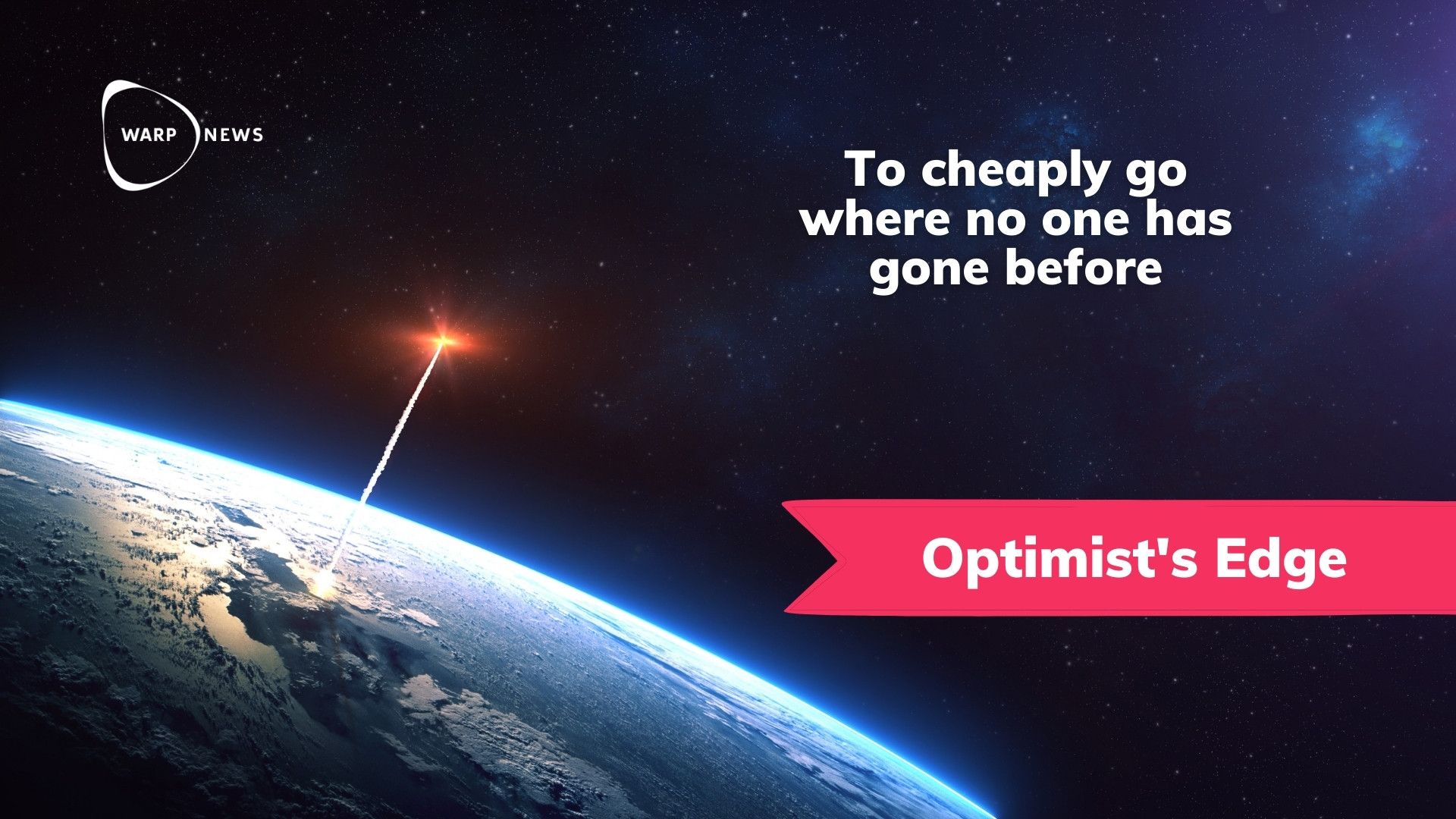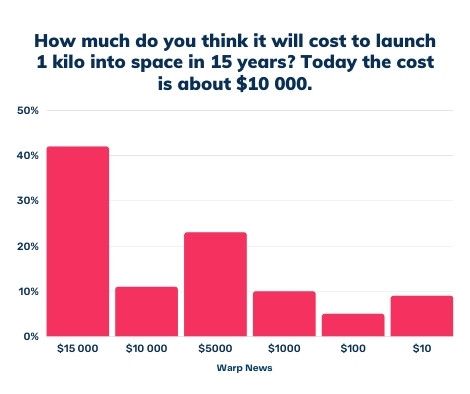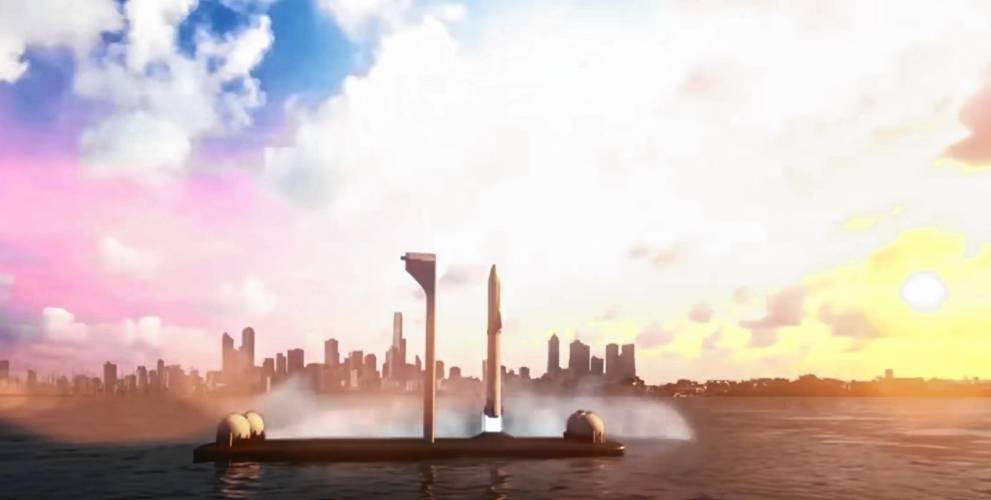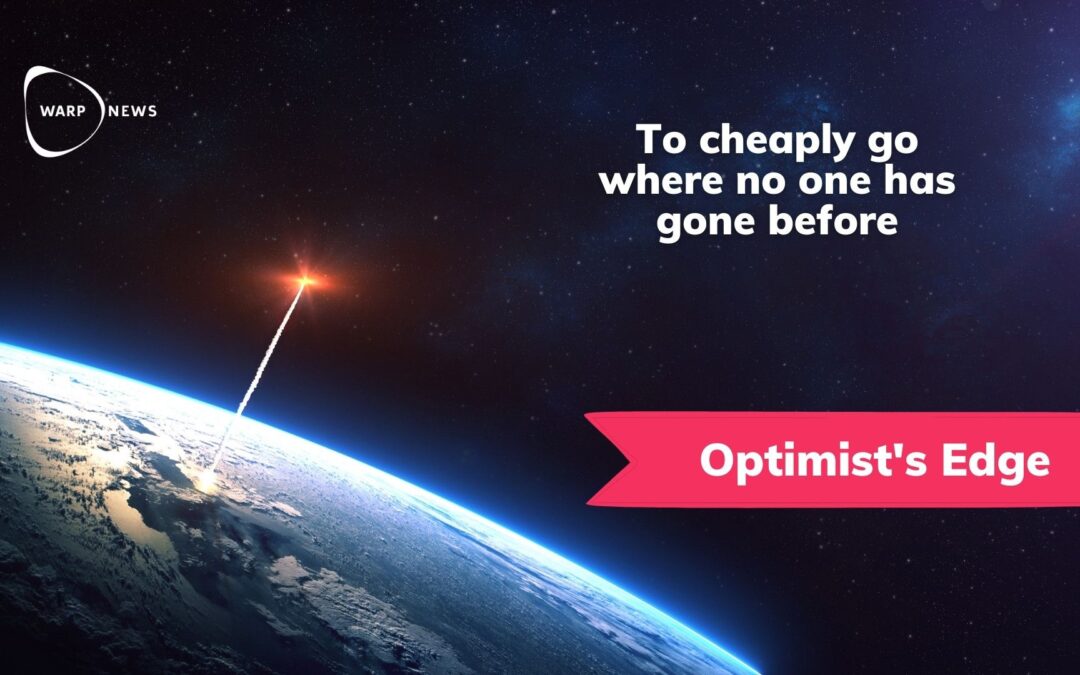📉 What people think

We asked 500 people what they think it will cost to launch things into space in 15 years if the approximate cost today is $10,000 per kilogram.
The most common answer, with 42 percent, is that it will be more expensive and cost $15,000 per kilo. 11 percent believe that the cost will remain at $10,000 per kilo. 9 percent think it will decrease to $10 per kilo.

📈 Here are the facts
Launching rockets and their payloads into space is expensive, but it used to be very expensive. Soon it will be pretty cheap.
How much it costs to launch a kilogram of payload into space depends on many factors, like if is to low-Earth orbit (LEO) or higher up, how exact the orbit needs to be and of course what the payload is.
Launching the space shuttle cost $54,500 per kilo. The new small Electron rocket brings a kilo into space for $19,000. Similar to the Russian Soyuz's $18,000. Europe's workhorse, Ariane, gets you there for $9,000. The Chinese Long March is around $8,000. These are not exact costs, but should give you a ballpark figure. Here you can check the cost for several different rockets.
One rocket stands out: SpaceX's Falcon 9. One kilo to LEO costs you only $2,600. Its sister rocket Falcon Heavy is even less costly at $1,400 per kilo. The reason why the Falcon rockets are "the cheapest" is that they reuse most of the rocket. The booster lands and is relaunched.
Even though much cheaper than the others, launching 100 kilos to space with a Falcon 9 sets you back over a quarter million dollars. And that is just the cost of the launch.
From $10,000 to $10
As long as getting to space costs thousands or even hundreds of dollars per kilo, access to space will be limited. But if we could drive the cost down to $10 per kilo, that would be something completely different. A reduction of like 99.9 percent.
That happens to be the goal of SpaceX's next rocket: Starship.
You've probably seen it already.
It is developed – and crashed – in public.
Starship will be fully reusable and eventually will be able to turn around and launch again as fast as an airplane.
It will be able to deliver 100 tonnes (or more) to orbit for a total launch cost of $1 million.
How close are we?
SpaceX is targeting an attempted orbital flight in 2022 or early 2023. Even if that is successful we are far from the rapid turnaround flights that are required
Our estimation is that we can be at $10 per kilo around the mid-2030s. But with spaceflight, there are always a lot of things that can go wrong and set a project back years.
The exact year is not the most important, but the cost trajectory is clear.
💡 Optimist's Edge
💡 In just a few years launching rockets into space will become 99.9 percent cheaper than today, opening up space like never before.
Such a low cost of $10 per kilo will make it possible to launch much more and much bigger things into space. We will go from a few thousand satellites to millions of satellites. From one space station to hundreds and eventually thousands. And not just small, cramped ones for five to ten people, but enormous structures where thousands and later millions of people can live and visit.
This also opens the possibility of large-scale asteroid mining and building things in space with material from space.

If we are to establish a self-sustaining second home on Mars, we need at least one million people living there, to start with. To ferry them all at the current cost would be very expensive and not doable. To make it possible to live on Mars, the Moon, and other places in the solar system we need the low launch cost that could come with Starship.
Scientists are drooling over the possibilities. They envision huge space telescopes, easier and cheaper journeys to the outer planets, and sending droves of rovers to Mars. Building science probes will also be cheaper, when they don't have to choose the super expensive lightweight options, but could buy more off-the-shelf products.
"Astronomy, planetary science, and Earth observation could all boldly go, better than they ever have before."
Starship will also make possible really fast Earth-to-Earth travel.

👇 How to get the Optimist's Edge
❓ So, how do you get the most out of this knowledge?
- First, start by thinking through the field you are working in or have a special interest in. If money wasn't a factor, what could you send to space and what possibilities would that create?
- Don't just think of traditional "space stuff". Maybe you are into ballet, what would a ballet performance look like in space? Making movies or music, writing a book looking down on Earth or out into space?
- We are going to need space people on Earth as well. The space sector is going to expand by thousands of percent. Millions of jobs will be created on Earth by companies doing business in space. Space lawyers are (unfortunately? 😊) going to be in hot-demand. Ginormous amounts of data will be streamed down on Earth, making it possible to build thousands of different services.
You now have an advantage because you have gained this knowledge before most others –


